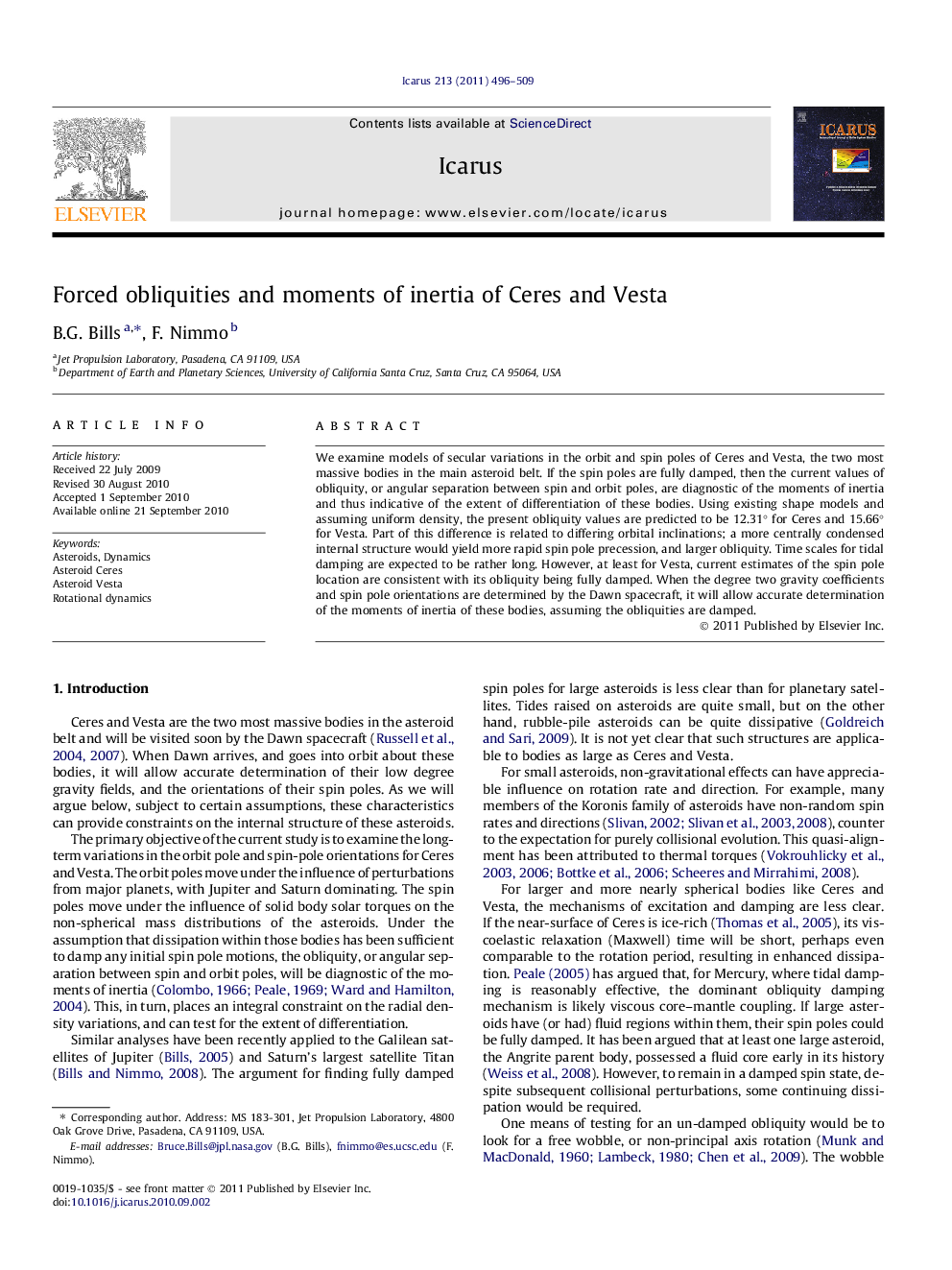| Article ID | Journal | Published Year | Pages | File Type |
|---|---|---|---|---|
| 1774516 | Icarus | 2011 | 14 Pages |
We examine models of secular variations in the orbit and spin poles of Ceres and Vesta, the two most massive bodies in the main asteroid belt. If the spin poles are fully damped, then the current values of obliquity, or angular separation between spin and orbit poles, are diagnostic of the moments of inertia and thus indicative of the extent of differentiation of these bodies. Using existing shape models and assuming uniform density, the present obliquity values are predicted to be 12.31° for Ceres and 15.66° for Vesta. Part of this difference is related to differing orbital inclinations; a more centrally condensed internal structure would yield more rapid spin pole precession, and larger obliquity. Time scales for tidal damping are expected to be rather long. However, at least for Vesta, current estimates of the spin pole location are consistent with its obliquity being fully damped. When the degree two gravity coefficients and spin pole orientations are determined by the Dawn spacecraft, it will allow accurate determination of the moments of inertia of these bodies, assuming the obliquities are damped.
